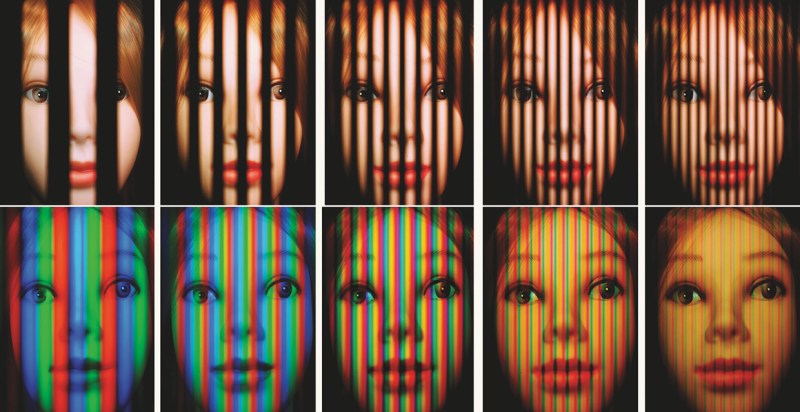Have you ever taken a picture indoors and had unsightly black bars interrupt your otherwise gorgeous photo? They are caused by lighting which flickers in and out in its normal operation. Some people can sense it easier than others without a camera. The inconsistent light goes out so briefly that we usually cannot perceive it but run-of-the-mill camera phones scan rows of pixels in sequence, and if there are no photons to detect while some rows are scanned, those black bars are the result. Annoying, right?
What if someone dressed that bug of light up as a feature? Instead of ruining good photos, researchers at the University of California-San Diego and the University of Wisconsin-Madison have found out what different frequencies of flicker will do to a photograph. They have also experimented with cycling through red, green, and blue to give the effect of a poorly dubbed VHS.
There are ways an intelligent photographer could get around the photo-ruining effect with any smartphone. Meanwhile DSLR cameras are already immune and it won’t work in sunlight, so we are not talking about high security image protection. The neat thing is that this should be easy to replicate with some RGB strips and a controller. This exploits the row scanning of new cameras, so some older cameras are immune.















I just came here to say that that the accompanying image made my eyes hurt.
This blinking/banding/strobing effect has become much worse these days with LED lightbulbs replacing compact fluorescents and regular bulbs. It used to be that only bad fluorescent tubes would blink, but now it seems half the bulbs out there are strobing because they’re not DC regulated.
Gives me migraines, especially the ones where half the LEDs are on every half cycle, so the light pattern changes .
PWM-controlled LED backlights cause headaches and eyestrain in some people, forcing them to use older LCD monitors and/or laptops with CCFL backlights.
If only we could get GM to increase the PWM frequency of their tail lights…
Several years ago, I was waiting behind a Buick at a red light.
The LEDs of the 3rd brake light were so bright (it was daytime) it was painful!
I wish we could go back to good old tungsten filament. You knew where you were with them. These new fluorescent ones take ages to reach full intensity, and could well poison you with mercury if you drop one on the floor. The LED ones are about 100 x the price of an old tungsten filament bulb.
“The LED ones are about 100 x the price of an old tungsten filament bulb.”
And I’m finding that they don’t last (much) longer than the tungsten ones either!
No idea where you live, but here the led filament lights are about the same price as tungsten filament lights, with good color, not flicker, dimable and seem to last just fine. IKEA sells them too.
Isn’t a similar technique used by those shady-market license plate frames with the LED strobes? Strobe at some multiple of the camera’s line frequency, and foil the ALPR toll system…
Yes, except none of the blinking lights systems work because the flash of the speed camera and/or daylight is so much brighter than a bunch of LEDs.
Has no one noticed how creepy that face is? I’d say its the eyes that account for most of the creep factor, but dolls in general sort of give me the creeps.
Yeah, that eye on the right appears to be out of place and much larger…
Seeing the image I thought the article was going to be about structured light for 3D scanning. Maybe this isn’t bad photography–it’s really a tool used by our robotic overlords for making clandestine 3D scans.